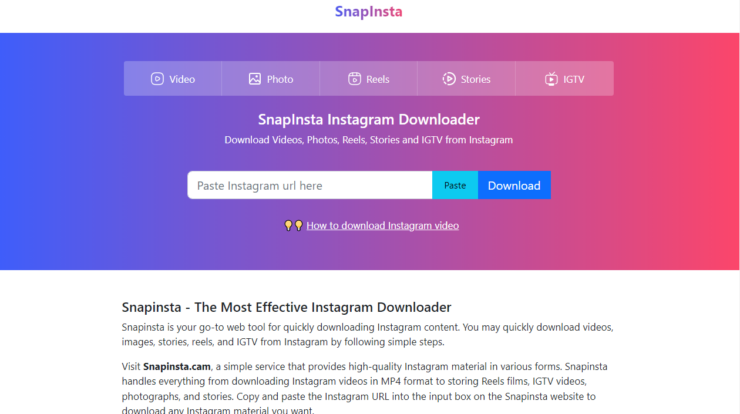
Fleet vehicle accidents are among the costliest losses to a business. They cost the company in terms of loss of goods, vehicle damage, and injury claims.
A fleet accident management program can mitigate losses by establishing policies and procedures. It can create a safe work environment for employees and also protect against liabilities from vehicle accidents.
Since there is no guarantee that accidents won’t happen, a program needs to cover processes like driver screening, vehicle inspection, testing, route planning, claim filing, etc.
If you want to ensure the safest practices for your fleet vehicles but don’t know where to start, discover the benefits of fleet accident management programs and why your company needs them.
Functions Of A Fleet Accident Management Program
Fleet management software accomplishes a series of specific tasks like driver management, asset utilization, tax calculation, route planning, etc.
Fleet accident management is an important segment of this software. It can also be an individual software program that provides end-to-end accident/incident support.
A fleet accident management program offers the following main functions:
Accident Reporting
Fleet accident management programs report accidents quickly with the proper location of the crash, photos, information on the damage, etc.
This step is very crucial for a business since it’s the base of all responses and future processes after an accident has happened.
Reduction Of Road Risk
The next function is to reduce road risk by creating and managing road risk policy. This part involves incorporating clear driver procedures to ensure that the best driving practices are followed on the route.
Accident Status Tracking
A business needs to track its accident status right from the date of the accident to insurance claims, repairs, and resolution.
The insurance process involves many steps and loopholes, which might be overwhelming for one fleet manager to track. Fleet accident management software can efficiently take care of these processes.
Auditable Trail Management
Businesses produce a lot of data, and a fleet accident management program keeps track of it all for better planning and risk aversion.
Accident management programs keep detailed records of accidents and associated vehicles, drivers, and routes. These reports serve as proof in instances where litigation is involved.
You can access any documentation you need almost instantaneously for legal and insurance purposes.
Why Do You Need A Fleet Accident Management System?
Mitigating Risks
When an accident happens, the losses are not just in terms of the products in the truck. The truck gets damaged, and, occasionally, a business may lose a driver who was an asset to the company.
Since accidents are unavoidable, the most your business can do is adopt fleet management best practices and mitigate risks to the best of your abilities.
A fleet accident management program can help businesses reduce the number of accidents with actionable data.
Several factors like driver training, vehicle maintenance, accident records, and more can reduce the chances of a fleet accident and lower a fleet company’s financial losses.
For Quick Response
A robust fleet accident management program is needed for a quick and efficient response to an accident.
Businesses need their drivers to respond to the fleet management team with information like the location of the accident quickly, damage caused, photos, etc.
This step helps businesses prepare for insurance claims and other accident reporting procedures. A quick response also helps in saving lives in case someone is hurt in an accident.
Smooth Operations
One of the main functions of a fleet accident management program is to ensure that all the vehicles are well-maintained.
If you manage a fleet, you must ensure that they don’t experience breakdowns en route pick-ups or deliveries. Breakdowns not only delay shipments and cost money but can also be fatal for drivers.
Plus, the accident management program can offer your field employees relevant data for proper route planning and dodging roads that have a higher chance of leading to accidents.
Effective Claim Processing
Effective claim processing is paramount to a company with a massive fleet of its own. Insurance claims are what prevent a company from going into losses in case of mishaps on the road.
Furthermore, claiming an insurance amount is not an easy job, and any mistake in the whole process may result in insufficient or no disbursal at all.
A business needs a fleet accident management program to ensure that all the processes are taken care of properly, right from the accident reporting to filing the claims, and finally, the disbursal of the claim amount.
How Does A Fleet Accident Management Program Help Your Company
Every fleet management software collects data on parameters that contribute to accidents. It analyzes all these factors to eliminate the risk of accidents in your transportation business as much as possible.
Here’s a brief rundown of all the information the program will record and analyze for you.
Annual Motor Vehicle Reports (MVRs)
Under this segment, the software covers the driver data with the help of an ELD. It aims to reduce risky driver behaviors and uncover potential accident risks.
An MVR is a driver’s performance report and a look into how a business can mitigate accident risks by hiring the right people.
Preventable/Non-Preventable Accidents
A fleet accident management program checks past accident data to determine if accidents can be avoided in the future. It divides accidents into preventable and non-preventable segments for better understanding.
This analysis helps a business prevent accidents by improving various factors like driver performance, vehicle load, route planning, etc.
Accident Types
While some accidents are caused by manual error, some may be caused by an issue with the vehicle.
Accident management programs capture accident-related information and then categorize them in types to identify issues and areas where a business needs to invest funds and time or seek assistance.
This data can determine the need for repairs, driver assistance technology, driver training, and more, thereby substantially reducing recurring accidents.
Time Of Day
This data helps identify a particular time (if any) when most accidents happen. This analysis finds out if the accidents seem to occur during rush hour, after hours, or at any other particular time.
With this information, businesses can change their drivers, driving times, and other parameters to avoid fleet accidents.
Accident Locations
By discovering where most accidents happen, businesses can plan alternate routes, establish new policies, and provide driver-specific training.
Sometimes, accident locations may also call for an often-ignored change in fleet type.
Conclusion
If you wish to boost fleet efficiency and safety, you cannot compromise keeping your fleet operators safe.
Fleet managers must, therefore, invest in the top fleet accident management programs and other truck safety measures to protect what is important: people, goods, money, and time.



